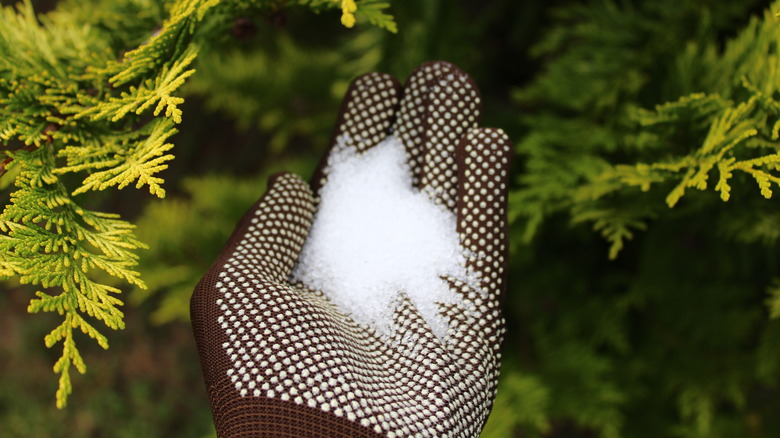Avocado trees are fun to start at home and watch grow. These tropical plants are typically only grown in the southernmost parts of the United States. Still, you can grow one in your backyard if you live in a warm region and can protect it from freezing temperatures, even if that means growing it in a container. Keeping it properly fertilized is crucial to ensure you’ll get to enjoy the literal fruits of your labor, and Epsom salt can help you with this.
Epsom salt isn’t a cure-all; it will add magnesium and sulfur to the soil, but it lacks nitrogen, phosphorous, and potassium (the NPK in fertilizers), so your trees won’t get everything they need. However, it’s still a good supplement for trees that need a magnesium boost. You don’t need much of it and will only have to use it a few times each year — making it a simple and cost-effective solution.
How to use Epsom salt as fertilizer

Epsom salt dissolves in water, so you can add it to a bucket of water to use on your plants. Avocado trees benefit from fertilizers that are 4 to 6 percent magnesium, so they don’t need much to receive the benefits. An easy way to figure out how much salts to use is to go based off of square footage. Use two tablespoons for every 9 square feet of roots and soil. Smaller trees won’t need much, but more established trees will require a lot more. The amount of water you use isn’t pertinent, but you should use enough to cover the roots.
You might hear from some gardeners that Epsom salt can change the pH of the soil and make it too acidic, but that’s not the case. Avocado trees need a pH of 6.2 to 6.5. You can use at-home soil tests to monitor your soil to see if the Epsom salts have any effect on it.
When you shouldn’t use Epsom salt
There’s a time and place for Epsom salt and fertilizer in the garden, and misusing either can do damage to your plants. It’s great to use if your avocado trees have a magnesium deficiency, which will reveal itself via yellow leaves. But if your plants have plenty of magnesium, Epsom salt won’t benefit them and could cause them to have too much. Too much magnesium can cause plants not to take up calcium correctly, which will lead to calcium deficiency. Since Epsom salt is soluble in water, too much magnesium in the ground could cause groundwater pollution.
Magnesium deficiencies are typically only a problem in very sandy or overworked soil. If your avocado trees aren’t yellow, the soil isn’t sandy, and it hasn’t been heavily tilled, you probably don’t need to give them Epsom salt. Some people give their plants Epsom salt by spraying the leaves, but this method isn’t ideal because it can burn the leaves in hot weather. If you give your plants Epsom salt, feed it directly to the roots rather than the leaves.